Eyes Rolling Drawing Weird Things to Draw Easy
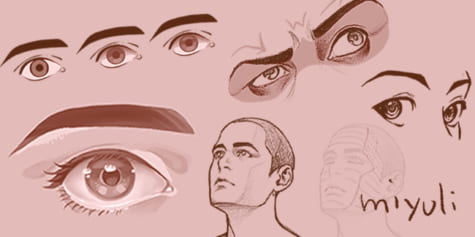
Eyes are one of the most important features on a character, but can be hard to draw. Don't worry I will teach you how to draw eyes for beginners. Learn the "eyemask" technique to help you create believable expressions!
Positioning the Eyes
In an average realistic adult face, the eyes are in the middle of the face. Usually, the pupils are sitting on the midway line.
Eyes are a good tool to measure the proportions of the face. In the front view, the eyes are one eye apart from each other and one eye apart from the edge. Due to bangs or sideburns the distance might appear smaller.
Don't worry too much about symmetry. Keep flipping the drawing horizontally until both ways look right. Human faces are not perfectly symmetrical.
From the side view, the positioning inside the eye socket makes the eye seem tilted.
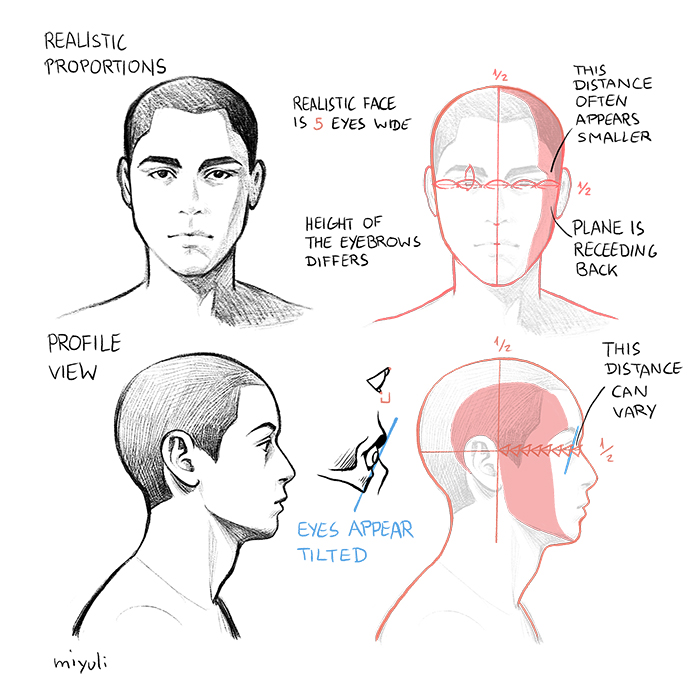
Stylised proportions are derived from realistic ones so the pointers can still be applied and deformed depending on the style. Even when the eyes are bigger, a structure that can be imagined in a 3D space should be established. This is the basis to make the eyes look 3-dimensional and imagine them from various angles.
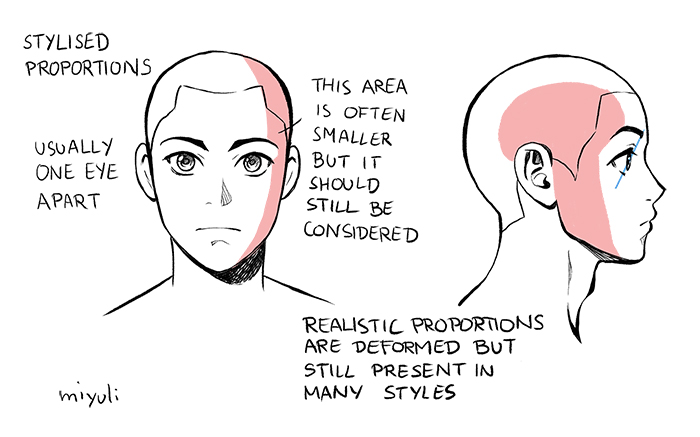
Eyes from Different Angles
From other angles eyes might appear flat if drawn in a straight line. The front area of the face is a little bent and the eyes appear slanted.
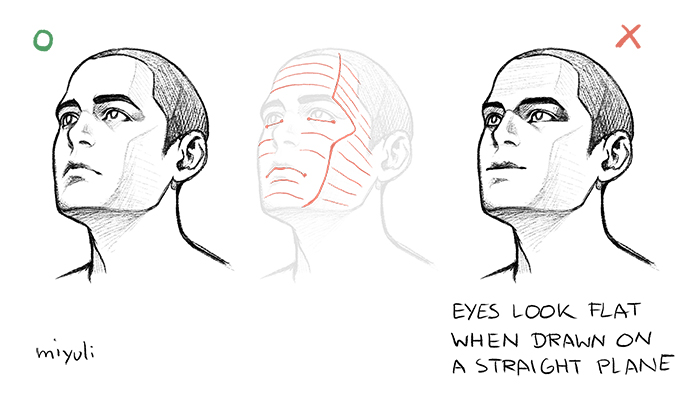
The form of the eye changes when the pupil moves. Don't be afraid to break up the eye shape to make it dynamic. The pupil moves on a sphere, not on a straight plane.
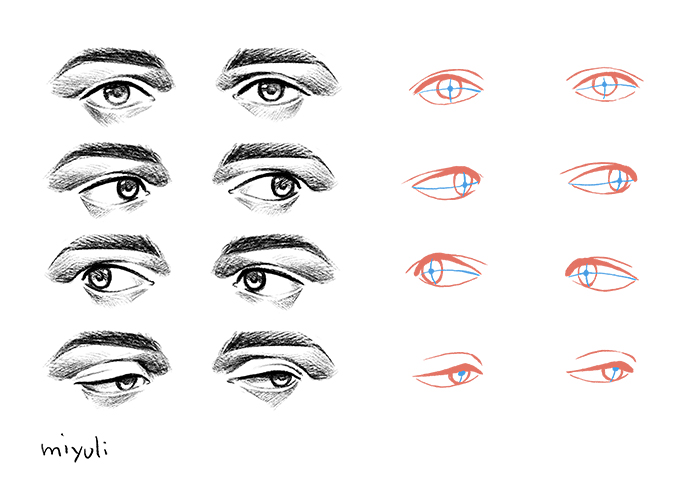
Especially when drawing eyes from a ¾ view it is important to imagine the spherical space they move on. Keep the thickness of the eyelids in mind. Stylised approaches might leave out some anatomical details, but the shape should still act like the realistic eye in order to achieve a 3-dimensional result.
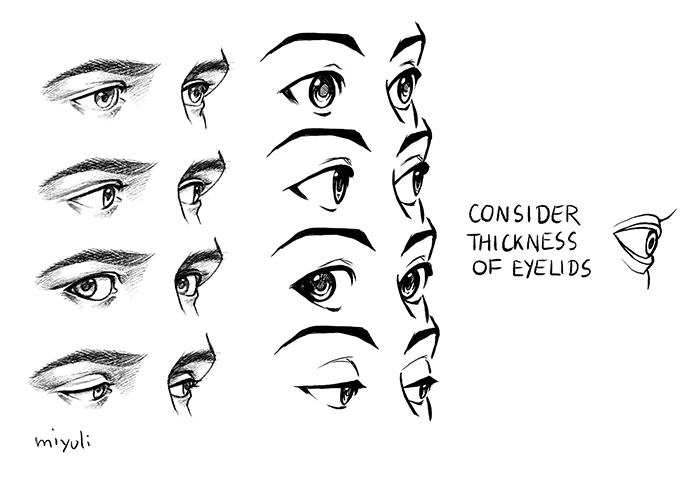
When the head is turned away in semi profile you might only see the tip of the eyebrow and eyelash. Turning it more reveals there is no space between eye and eye bridge. This indicates a strong change of direction to where the head is facing before it turns into a full profile.
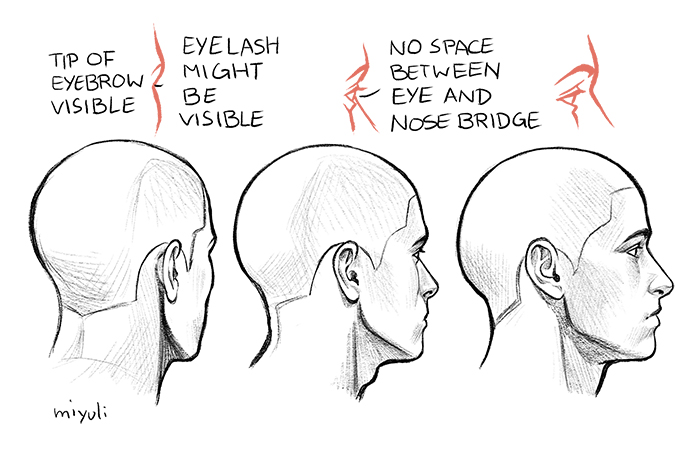
Expression
Imagining an eye mask can help to unify the features around the eyes so that they don't just float on the face. The eye mask is also easier to imagine in different angles. Making the features work together helps to enhance the readability of the intended emotion.
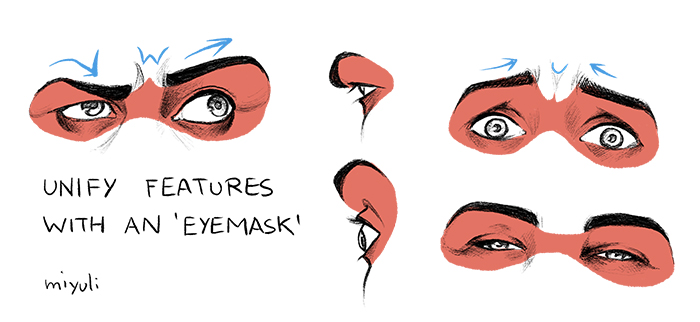
Eyebrows are a very powerful tool to show emotions. Sometimes it can help to exaggerate the eyebrows even if it might stray away from a realistic approach. Bringing eyebrows down to the eyes makes a strong expression. The effect grows when the expression is preceded or succeeded by a contradictory movement to show the full range of squash and stretch.
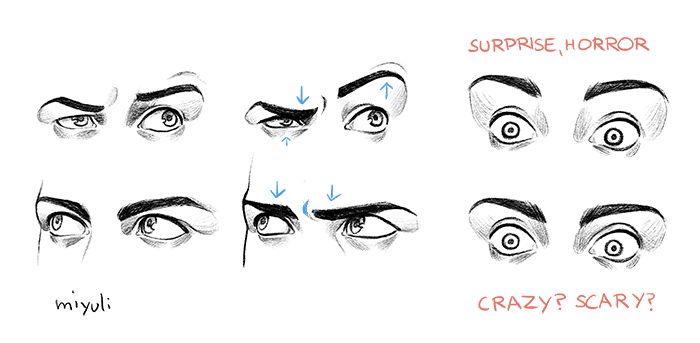
Facial muscles are your best friend! Even just slightly indicating them can instantly strengthen the expression.
Pushing an expression even a little bit, by showing more squash or pushing the features, is what separates a lifeless copy of a photo and an expressive drawing.
Be careful about showing too much white around the pupils. Use it to show surprise, horror or danger. Inadequate use can easily lead to a crazy look that puts people off.
Eye shapes
Eyes have a broad variety of shapes. Avoid symmetry in order to make them less static and boring. Experiment with different placements of the peak of the eyelid, eye shape, eyebrows, eyelashes, and pupils. See eyes and eyebrows as a set to make them work together not separately. Men's eyebrows are usually closer to the eye.
With age the eyes get droopier, and more and more wrinkles appear.
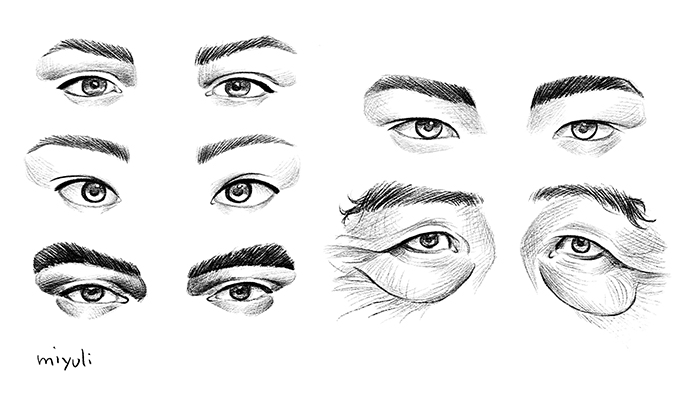
Take into consideration what you really need. Simple eyes might work better for animation or a style that is more based on movement. Illustration and close-ups might require a more detailed approach.
Personally, I try to avoid spending too much time on eyes so that I don't forget the rest of the body. However, in an emotional drawing, giving special attention to the eyes might be a good idea.
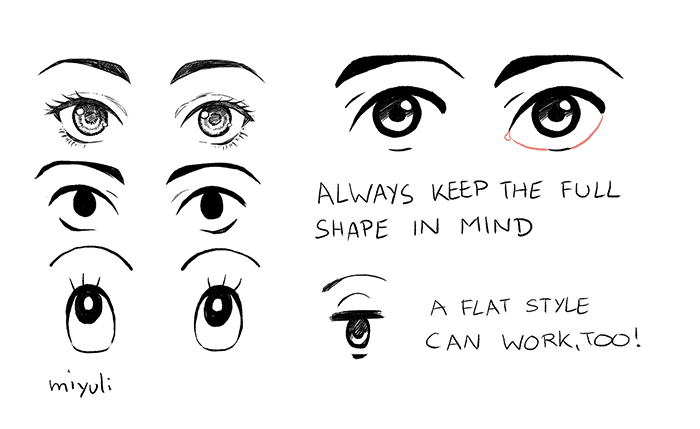
It's helpful to imagine the eyes as a closed shape even if you decide to leave gaps at the corners of the eyes. This makes it easier to indicate volume and draw the eyes at different angles.
Details
The cornea is a transparent lens covering the iris and pupil. It has an effect on the shape of the eye. Be careful with the position of the pupil from different angles.
Big pupils indicate looking at something far away or the eyes adjusting to a dark situation, among other things. Small pupils occur during bright light or looking at something from up close.
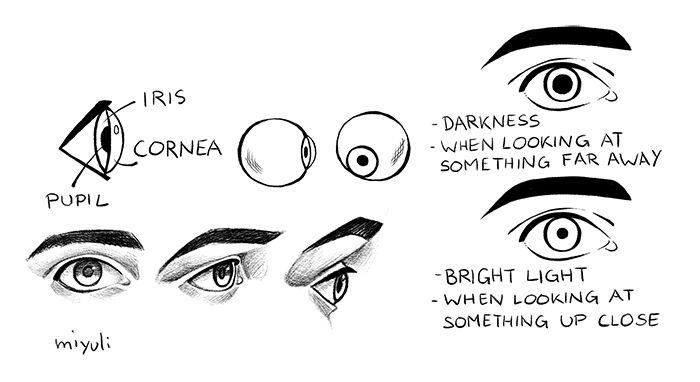
Colouring the eyes generally depends on the lighting situation and what style you want to go with. Consider these four basic steps. Making the white of the eye darker makes the highlights pop even more.
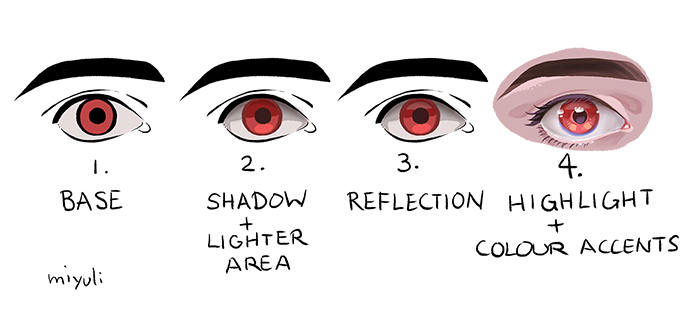
Sometimes it can be interesting to experiment with different colour accents and softer/harder edges for the iris.
I hope this tutorial was helpful.
Source: https://www.clipstudio.net/how-to-draw/archives/155631
Post a Comment for "Eyes Rolling Drawing Weird Things to Draw Easy"